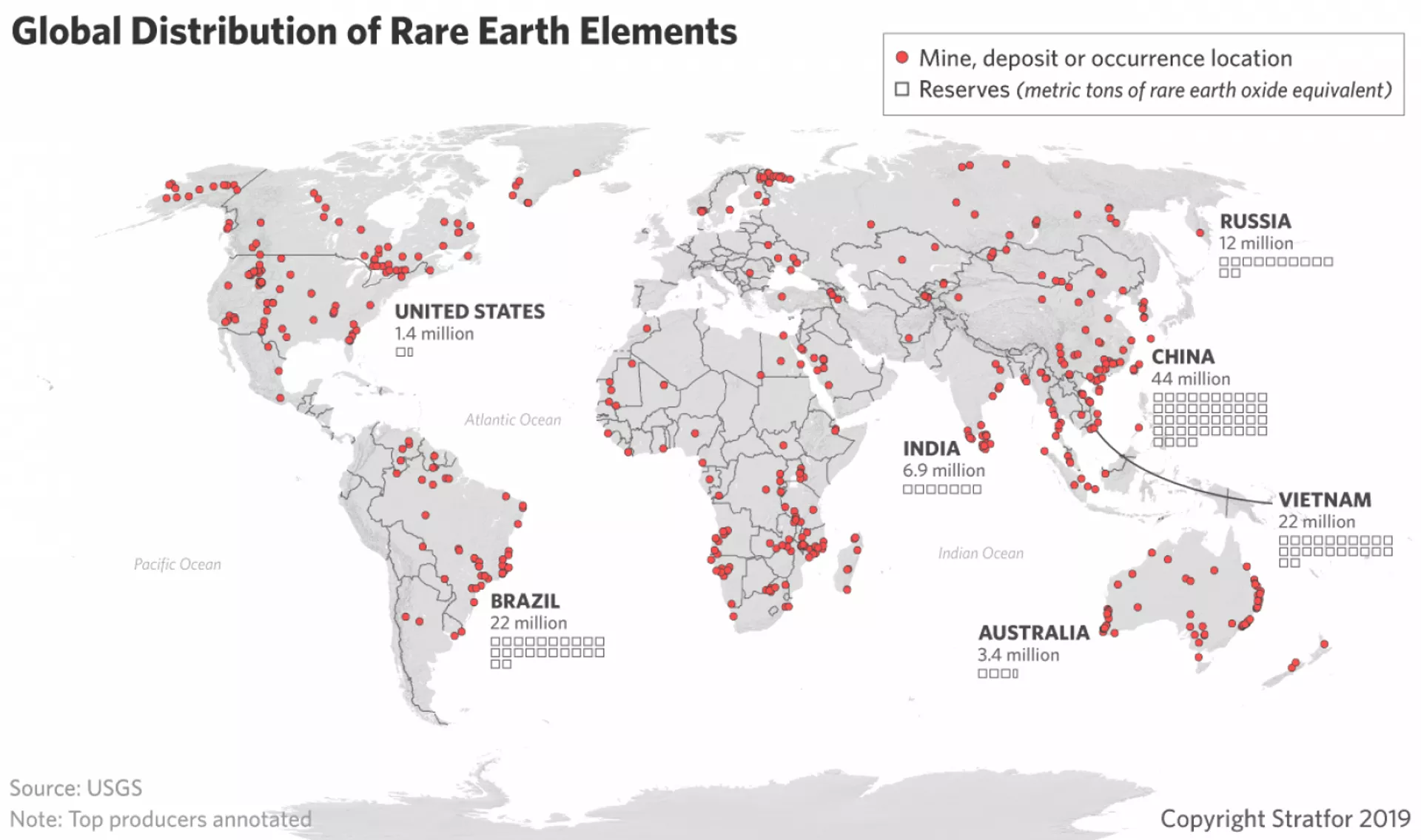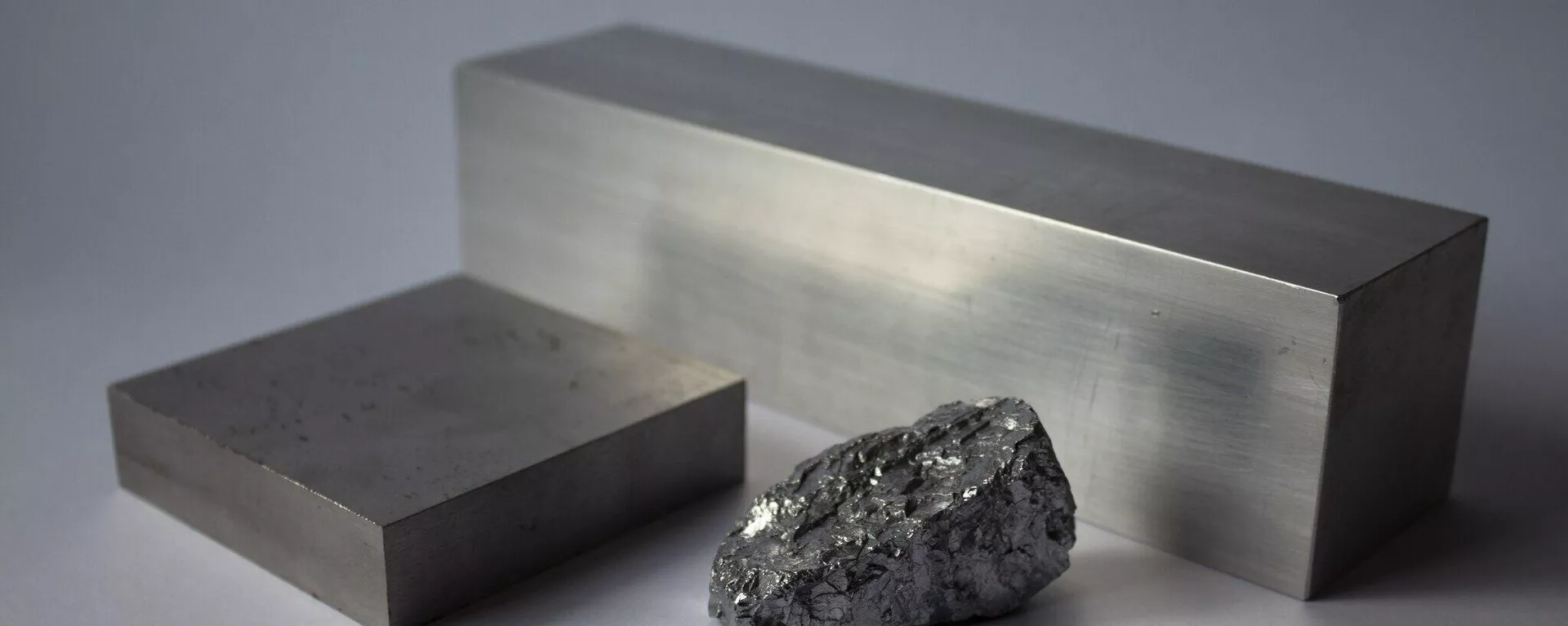Basic Facts
Rare earth minerals are a group of 17 silvery-white soft heavy metals, mostly consisting of the lanthanides, a family of 15 elements grouped together in the Periodic Table, plus scandium and yttrium, which have similar chemical properties and are often found in deposits alongside the others.
Despite their name, rare earths aren’t especially rare, with one of the rarest – lutetium, some 200 times more common than gold. Rather, what makes the resources rare is finding them in large, easy to find and mine clusters.
Rare Earths and Their Uses
Lanthanum (La): Used in nickel-metal hydride batteries for hybrid vehicles, lighting, camera lenses and other special glass, and as a catalyst for petroleum refining.
Cerium (Ce): Added to an array of alloys for increased strength and corrosion protection, magnets, for burn treatments, glass polishing agents, lightbulbs and household wares including ceramics.
Praseodymium (Pr): Key component for aircraft engine-grade high-strength alloys, powerful magnets (including for use in wind turbines), tough didymium glass, and fiberoptic cables.
© Photo : StratforUSGC data-based map of global rare earth element mines and known strategic reserves by country.

USGC data-based map of global rare earth element mines and known strategic reserves by country.
© Photo : Stratfor
Neodymium (Nd): Used for everything from magnetotherapy to magnetic motors, microwave communications, microphones, headphones, loudspeakers, hard drives, automotive electronics, fluorescent and energy-saving lamps and lasers.
Promethium (Pm): Key component for luminous paint, portable X-rays, and atomic batteries for critical electronics, from the military and aerospace to pacemakers.
Samarium (Sm): Active ingredient in a popular cancer-cell killing agent; used in combination with other elements in magnets, lasers and nuclear reactor control rods for neutron absorption.
Europium (Eu): Another excellent neutron absorber, as well as red phosphor for TVs, blue color in LEDs, and therapeutics tool.
Gadolinium (Gd): Active ingredient for MRI drugs. Also used in nuclear propulsion systems, metallurgy, microwave and magnetic refrigeration.
Terbium (Tb): Key tool for chemical screening; green phosphor for TVs and monitors, used in lighting, military grade sonar and other sensors.
Dysprosium (Dy): Used to make powerful permanent magnets, lasers and lighting, electric drive motors for EVs and wind turbines, transducers, resonators, and dosimeters for measuring ionizing radiation.
Holmium (Ho): Another neutron-absorber useful for radioimmunotherapy, magnets, as well as optics, microwave, medical, dental and laser surgery equipment.
Erbium (Er): Added to lasers and optics used in medicine, as well as optical communications, with strong neutron-absorbing qualities. Also useful for chemical analysis and crystal growth.
Thulium (Tm): Used in military and industrial-grade lasers, as a source of radiation for portable X-rays, for meteorology and high-temperature superconducting tools, and popular anti-counterfeiting agent.
Ytterbium (Yb): Key element in X-ray components, memory devices, tunable lasers, amps and displays; metal-strengthening component and burnable poison for controlling nuclear reactions.
Lutetium (Lu): Used in petroleum refining, polymerization, lithography, tomography, as a phosphor for some light bulbs. Also used for tumor treatment, and to build the world’s most accurate atomic clocks.
Scandium (Sc): Key ingredient for high-grade lightweight alloys for everything from military and commercial aircraft to sporting equipment, small arms, high intensity discharge lamps, dentistry, and as an oil refinery tracing agent.
Yttrium (Y): Another metal-strengthening alloy. Also used for high-temperature superconducting, a surprising array of medical applications (from drug labeling and cancer treatment to surgical needles) as deoxidizer and nodulizer, the red color in cathode ray tubes, radar and synthetic gems.

 3 months ago
24
3 months ago
24









 We deliver critical software at unparalleled value and speed to help your business thrive
We deliver critical software at unparalleled value and speed to help your business thrive






 English (US) ·
English (US) ·